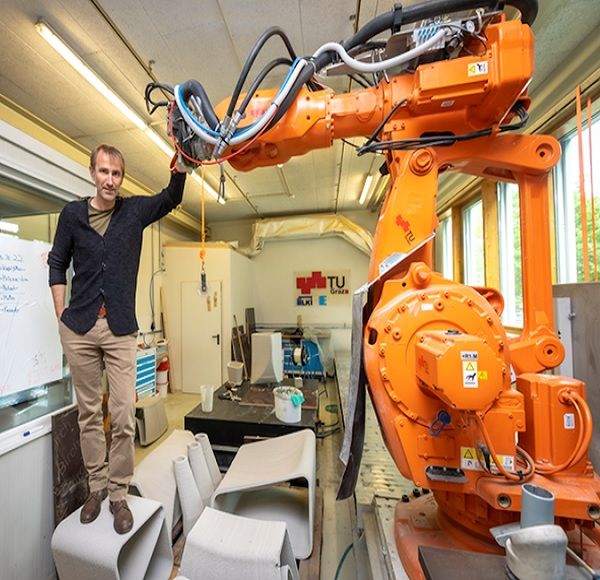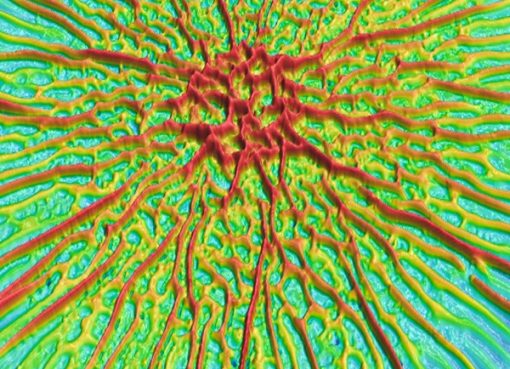A team at Graz University of Technology has been able to 3D print concrete, bypassing the CO2 emissions that often accompany the production of this key building material.
Trummer is one of the researchers working on lightweight concrete construction methods at the Institute of Structural Design at TU Graz. Originally, the civil engineer focused on timber construction, but he soon turned to mineral building materials in order to participate in the decarbonisation of the construction sector, using 3D printing.
Its team is now dedicated to the development of the new method of 3D printing concrete.
“This means that for the first time in 150 years of concrete construction history, we can produce concrete components without formwork, i.e. without casting moulds,” he said. “We can print the elements in completely new, even load-bearing geometries and delicate shapes.”
In concrete-based house construction, printed concrete elements can save considerable amounts of money, as well as have significantly less CO2 emissions. Overall, using printed recess units can see material savings of up to 40 per cent by volume, the researchers explained. In the future, it can also be used to build low-cost housing, in a method recently tested to support slum dwellers in El Salvador.
At TU Graz, filigree concrete elements with wall thicknesses of only 2cm are supplemented with conventionally processed concrete in roof and ceiling constructions. Concrete is only used where the load-bearing structure and load distribution require it.
“However, we don’t just want to explore the wonderful technology of concrete 3D printing in the laboratory, we also want to integrate it into tried and tested construction processes,” said Trummer.
For the first time, the production of the printed concrete parts was carried out directly by the executing company, while the TU Graz team took care of the planning, design and project facilitation.
“This was a very valuable collaboration for us, because there are many subtleties that can only be recognised in the construction site process,” Trummer said.
He and his team are currently advising on a similar construction project in Vorarlberg.
Nevertheless, there are still open issues, such as the question of reinforcement of floor slabs with integrated printed concrete elements. A smooth, conventional concrete slab is reinforced with geometrically simple steel bars or grids. In the case of printed lightweight slabs with intersecting ribs, this is significantly more complex and therefore more costly.
“There are simply many more hand movements necessary. That was a big realisation at our institute,” said Trummer.
The Institute is therefore working with the Graz-based company AVI (Alpenländische Veredelungs-Industrie GmbH) as part of an FFG-funded ‘City of the Future’ project on a new reinforcement principle for concrete slabs of this type. The aim is to facilitate assembly on the construction site. Ideally, in the future, the precisely fitting reinforcement can be ordered directly from the 3D concrete printer for each individually planned lightweight slab.
Concrete alternatives have long been appearing, as the construction industry aims to separate itself from its impact on climate change. From plastic to recycled concrete solutions, many new materials are expected to compete for the title of building material of the future. In this context, 3D-printed concrete might be one of the main options to watch.

Source: E&T










